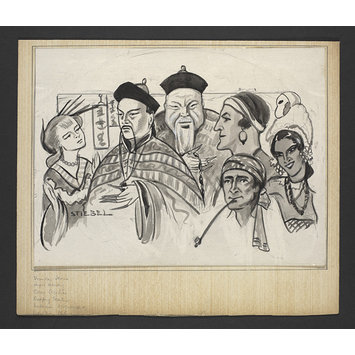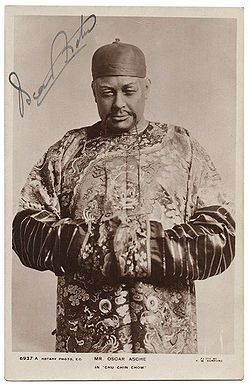The Shanghai Jester, 1928
Posted: February 27th, 2016 | No Comments »Ehh? What? this little gobbet from the Arizona Republic newspaper in 1928 that neatly encapsulates just about every prejudice, misconception and stereotype of the time….
All things old China - books, anecdotes, stories, podcasts, factoids & ramblings from the author Paul French
Ehh? What? this little gobbet from the Arizona Republic newspaper in 1928 that neatly encapsulates just about every prejudice, misconception and stereotype of the time….
The other day I posted some American sailors leading an impromptu band down the Bubbling Well Road. There was, of course, a grand tradition of sailors enjoying Shanghai. Here then in 1928 some “gobs” (then slang for American sailors) try their hands punting sampans of the Whangpoo (Huangpu) River.
This appeared in the papers in 1931 – I honestly have no idea if it’s true or not!! Whilst obviously wishing to avoid all crass stereotyping or city-based character assumptions, I have spent rather a lot of time in Shanghai over several decades. While, admittedly, those decades were not the 1930s and things may have changed, I find it hard to believe that this law ever went anywhere in Shanghai!!!
Kong (1931) with Oscar Asche and Ursula Jeans was the first musical staged at the Cambridge Theatre, London. The theatre opened on 4 September 1930. Kong was a production firmly in the style and tradition of previous big Orientalist West end productions such as Kismet and Chu Chin Chow (which had been a massive hit throughout World War One – see Anne Witchard’s England’s Yellow Peril for more on that). Indeed Asche had been the man behind Chu Chin Chow. Kong was written by Harold Kingsley, who also had form as a purveyor of interpretations of the Far East on stage with his A Night in Canton. However, Kong didn’t quite garner the rapturous reviews Chu Chin Chow had. The Sunday Times mocked the production by noting that Kong (played by Godfrey Tearle) was a “a wrestler with an Oxford accent” who loses his wife to a fat Mandarin (Asche). The Mandarin order Kong’s right hand cut off which is then replaced by a hook so he, inevitably, becomes a pirate, kidnaps the Mandarin’s daughter-in-law. The Mandarin dies at the end of the first act meaning Asche didn’t have much to do. As Asche was in his sixties by this time and not in great health (he died a few years later in 1936) this was probably to spare the old trooper the rigours of hard work.
the production was lavishly produced – though the papers noted that the costumes could have come straight from Chu Chin Chow, 15 years earlier, and so seemed a little dated. Fantastical as they were, tastes had shifted a little by 1931 and they appeared positively pantomime to the contemporary audience and critics. The settings are as expected to – an opium den, an Orientalist palace. Still it largely failed – not quite spectacular enough; not enough near naked females on stage due to budget constraints and the songs were just not as good as Chu Chin Chow (which made up for that production’s equally thin plot). Kong only last 20 performances and marked the end of the West End’s big Orientalist spectaculars and also Asche’s musical-comedy career on the London stage.
 Drawing of the cast of Kong at the Cambridge Theatre, by Stiebel, ca.1931
Drawing of the cast of Kong at the Cambridge Theatre, by Stiebel, ca.1931
 Oscar Asche in Chu Chin Chow – pretty much the same look as in Kong 15 years later
Oscar Asche in Chu Chin Chow – pretty much the same look as in Kong 15 years later
This March sees the return of the Macao Literary Festival….a host of Chinese, Lusophone and international authors are appearing…more details here….
A recent survey of estate agents in London confirms that Chinese buying property overseas are pretty much the same as at home – overwhelmingly interested in only buying new properties. Not for them the charming old buildings, that require maintencance, preservation and may have the odd kink – they want new, modern and shiny. This appears to be true reading property reports from Shanghai and Beijing to the Gold Coast, London, Paris and New York…seems it always was too – here from 1930….
Shanghai, January 1929 and the US Navy is in town and up to high jinx. Here Gerald H Glauser of the US Navy leads a band of Chinese musicians and assorted navy boys in an impromptu parade down the Bubbling Well Road (Nanjing West Road to newcomers). What exactly this racket sounded like we cannot know and only imagine but everyone seems to be having fun….
Apparently this is what a Macao policeman looked like in 1935….